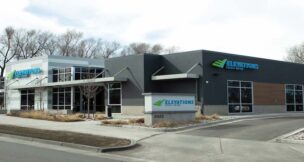Not all roads are created equal


Not all roads are created equal

When you get on a toll road, especially during rush hour, you can immediately tell the difference. There’s an ease of movement, lack of stop-and-go traffic and few, if any, bumps. Across the United States, toll roads are improving journeys for countless travelers. The broader impact and untapped potential of toll roads, however, is a lesser told story.
When no road is free
Whether it’s financed by users, or by the local or state government, you’re paying to drive on roads. While some may avoid user-financed roads, the small fee you pay to drive on them goes toward much more than a simple trip from Point A to Point B
In addition to faster travel speeds, little to no congestion and well-maintained road surfacing, road users are choosing toll roads for the courtesy roadside assistance, 24/7 traffic incident monitoring and reporting and the dedicated teams prepared to proactively plow and manage the roads in snowstorms.
User-financed roads are there to provide drivers a service, and for the road to continue to exist, it must provide a quality service worth paying for. Meaning it’s much harder for a tolled roadway to neglect regular maintenance or to ignore increasing levels of traffic and congestion, because if it doesn’t, the traveling public would stop using them.
Toll roads offer a solution
Since 2010, Colorado has grown by almost 700,000 people, averaging an influx of 60,000 to 70,000 new residents each year. Most of these new residents reside along the Front Range, from Denver to the surrounding cities. As the population grows, so does frustration with transportation infrastructure. A holistic set of mobility options are being promoted throughout the state (walking, biking, transit and more), but travel by car isn’t going away any time soon.
This hockey stick growth and frustration is juxtaposed by failed ballot measures at the local level looking to increase funding for public transportation initiatives as well as diminishing returns from existing funding sources. Nationwide, the gas tax, which is traditionally used to fund public transportation projects and improvements to existing infrastructure, has not been increased in more than 20 years. As a result, the Federal Highway Trust Fund is expected to hit a shortfall by the end of 2021, and the Congressional Budget Office projects this outlay will cumulatively reach $119 billion by 2028.
Meanwhile, toll roads have proven to be a reliable means of funding and maintaining roadways throughout the United States, including Colorado. In Denver, local toll roads have been formed through efforts in regional collaboration to address mobility needs and have proven successful by showing year-over-year growth.
The impact goes beyond the roadway
A growing number of road users are opting to travel on toll roads. In the Denver Metropolitan area, tens of millions of transactions are captured on these user-financed roadways each year. But the impact goes beyond the roadway. Along the E-470 corridor alone, third-party analysis shows that:
- Property values along the corridor increased from $97.7 billion in 2015 to $157.3 billion in 2019, an increase of $59.4 billion in five years.
- Since 2015, the area along the corridor grew by approximately 20,000 persons, a year and approximately10,500 jobs, a year.
- This roadway saves residents from an additional 43.2 million hours of driving per year (three times the amount in 2015), translating to $446 million in annual travel time savings.
These numbers show that the benefits of toll roads matter not just in the car, but also outside of it. While government struggles to fund much needed improvements to public infrastructure and transportation, consumers are faced with a choice, and it’s worth keeping in mind that toll roads offer a choice – you’re paying either way, after all.
(This sponsored content was provided by E-470.)
 Jessica Carson is the director of operations at the E-470 Public Highway Authority, leading the operations team in everything from tolling services to public relations.
Jessica Carson is the director of operations at the E-470 Public Highway Authority, leading the operations team in everything from tolling services to public relations.













